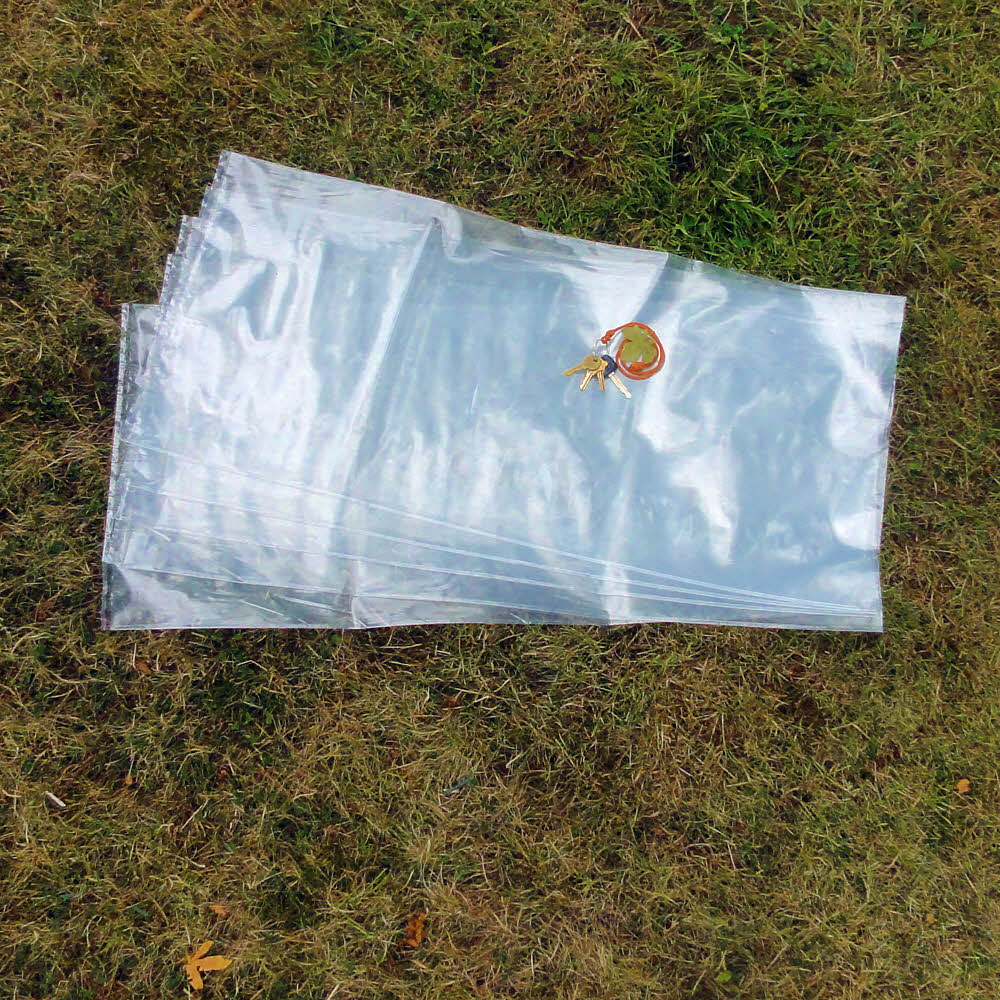My New Plastic Pals.
A little item, but fun.
Living in western Washington state as I do, I never go anywhere without preparing for rain. For years I've been using three kinds of plastic bags to protect my things:
- Trash bags
- Cleanup bags
- Compactor bags
Trash Bags
One is the ordinary large trash bag or leaf bag. These have a capacity of around 32 gallons (121 L), and are made of extremely lightweight plastic (I'm guessing that it's about 0.7 mil or 0.02 mm). That's good and bad.
Good: These are big bags, big enough to cover a lot of gear inside a pack, but weigh only about an ounce (28.4 g).
Bad: They're extremely easy to tear, either by stretching if grabbed the wrong way, or by snagging on the smallest, most innocent-looking thorn or bramble.
If the weather is likely to be gentle I may use these inside the pack, and take an extra one as a pack cover.
Cleanup Bags
Cleanup bags or contractor cleanup bags are seriously hefty. They're about the same size as the ordinary trash bag, but each one weighs four ounces (113 g). Add a few of these to your load and, although you probably can't actually feel the weight difference, you'll feel guilty anyway.
Good: These bags are extremely tough and durable. And large. So if you don't need the bag's full volume, you can cut it down to size.
Bad: Heavy and stiff. They're heavy enough to make you wish there was an in-between weight. But there isn't. Not for this size of bag — it's either the too-light trash bag or one of these, which feels more like a wooden box than a plastic bag.
Compactor bags
Trash compactor bags are smaller than the previous two types, with intermediate strength and weight. They weigh two ounces each. In slightly less amiable weather, I may use one to hold my sleeping bag, but they're too short. Usually I take two, one with its open end up, holding the sleeping bag, and a second compactor bag as a lid, going over both the other bag and my sleeping bag, with its open end down.
This way, I get lots of protection and since nothing is tied shut, it's easy to squeeze the air out of the sleeping bag and both protective bags as I close up my backpack. And if anything goes wrong and one compactor bag goes out of commission, I have a backup plastic bag to put my sleeping bag in.
I normally use this type bag for my food. I bag my food as individual meals, collect and bag separate meals as a bunch, and keep the whole shebang in a compactor bag. The more layers the better, because my goal is to be aromatically undetectable, food-wise. The bags' white color also helps me to keep track of it while it's hanging overnight, and in re-locating it the next morning.
Also, using compactor bags gives me a target.
When I stop at the end of the day, I lay out a compactor bag flat, and then put my loose things on it. No matter how dark things get, I can always see where that bag is, and know that the last little thing I laid down is right there, on top of it. Although morning light is stronger, I use the same technique — the white square is a flag I can't miss.
Meh.
But there is a problem: all these bags are opaque. The first two kinds are black or brown-black, and the compactor bags are white. White is an anti-stealth flag, but has its uses, as just noted. Black, gray, or any other dark color is more stealthy but hides the bag's contents just as well as the white bags.
Which is where fish bags come in.
Hmmm.
At the moment I'm living next to salt water. People fish in it. Less than two blocks from my place is an old-fashioned general store which leans toward the hardware end of things. You never know what they have until you wander through the entire store and look at everything one more time. It's amazing. And they have fishing equipment.
One item I walked by about two dozen times without looking was a box full of polyethylene bags. Clear polyethylene bags. Big ones. Huh. Ninety-seven cents each. I didn't know what I'd found until I tugged at the corner of one. Wo. Large, tough, heavy, and transparent. That's what I've got now. I bought five.
I don't know how common this sort of thing is. I found only one reference to it, which says 'These are heavy duty bags that are great for keeping your catch it [sic] until you can get it back home. They are 22"x39" 4 mil poly ice bags.'
That sounds about right. I thinks that's exactly what I've got.
Now I'll try them out on the trail, hanging my food in one, and, well, we'll see. Maybe one for food and one for bedding this time. They're perfectly transparent so there will be no doubt about what's inside, and the way they're built, each bag should be good for several trips — maybe the whole season.
More:
